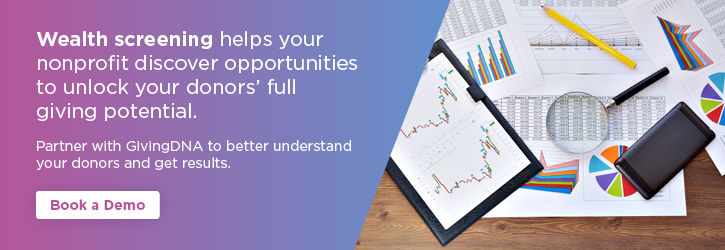Let the Cookies Crumble: You Still Have the Best Data
By the end of 2024, the third-party data collected by Google’s Chrome browser will no longer be available. Apple Mail Privacy Protection no longer allows the invisible attribution pixels that marketers load onto emails to collect data from recipients. And as time has gone on, new laws and state regulations have created more boundaries around when and how marketers can access people’s data.
Is this a disaster for your nonprofit’s fundraising and marketing? No way! These changes don’t have to leave you in the dark about your donors.
Quick Review of Types of Data
Marketers and fundraisers rely on several different types of data.
Zero-party data: The information your donors volunteer, like when they fill in a form or check a box.
First-party data: The information you collect on your website via first-party cookies, like how long a visitor stays on a page or which pages they visit.
Second-party data: This is essentially first-party data owned by another entity and offered for sale. For instance, a media publisher might collect data on its readers (first-party data) and sell it to advertisers (second-party data).
Third-party data: This is data acquired by groups like adtech companies through cookies they apply to sites across the web. The data these cookies gather tracks visitors’ browsing history across devices and the Internet.
Most of the data privacy regulations have to do with third-party cookies. The good news is that as a nonprofit, you have access to lots of good data without these cookies.
You Still Have the Best Data
The data you collect from your donors directly has several benefits. First of all, privacy regulations have to do with data that people don’t know they’re giving you. The information they willingly volunteer is not subject to these restrictions. But the value of this data is more than “it’s allowed.” The more zero-and-first-party data you have, the more you’ll understand your donors. This will help you create personalized communications, relevant donor journeys, and fundraise more effectively.
#1: It’s High Quality
When someone provides information about themselves, it’s likely to be up to date and accurate. You don’t need to worry about misinterpreting it or how old it is. There’s very little guesswork. Better data upfront means cleaner data along the way, helping you to get the most out of your CRM.
#2: It’s Yours
The data you collect on your own website and from your own supporters are not dependent on the whims or business goals of any other entity. This makes strategies that center on zero-and-first-party data more sustainable, and able to weather the changes for third-party platforms. And unlike data from a third-party, you are the only organization with access to it.
#3: It’s Cost-Effective
While you may pay for tools to collect and store it (survey tools, your CRM, etc.) zero-and-first-party data itself is free. In fact, it’s very likely you already have a large collection of this data, ready to be used without paying another dime.
The Data Privacy Conundrum: What Nonprofits Must Know for Year-End Planning & Beyond is our free guide to help you understand the latest in data privacy, and what to do with your data. This eBook will walk you through what you need to know, what it means for marketing and fundraising, and how to approach using data to connect with your donors. Get your copy now!
Book a demo to learn how GivingDNA can help your organization.

